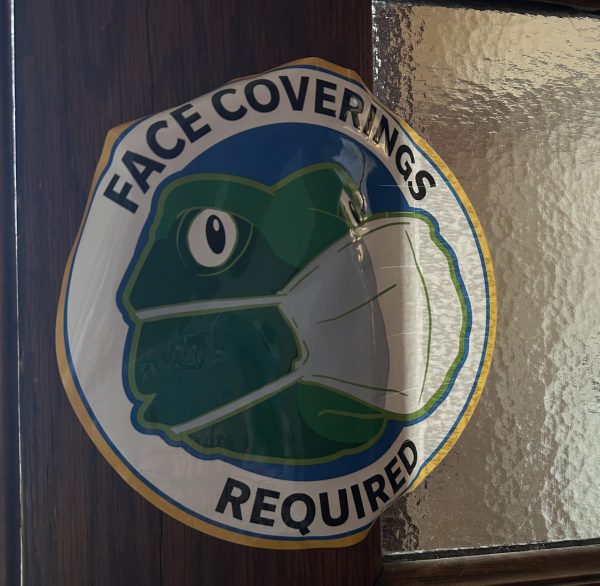New committee forms to guide college
Strategic Planning Committee implements Combinations 2020
This fall, the college saw the introduction of the Strategic Planning Committee, which is comprised of faculty, staff and the president of Allegheny Student Government. The purpose of the committee is to guide the college through the challenges it will face as it moves forward from its bicentennial year.
With the landscape of higher education changing across the country, the committee will face challenges in the next few years, including changing demographics and under enrollment in the class of 2018. A large part of the committee’s role is to implement the Combinations 2020 action plan.
Combinations 2020 is a comprehensive plan to improve the overall experience of students at Allegheny. The program states that by 2020 “Allegheny College will stand among the most distinguished and recognized colleges in America. High achieving students from around the world who possess an unusual combination of interests, skills and talents will make Allegheny their first choice among liberal arts colleges.”
Linda DeMeritt, provost and dean of the college, who also sits on the Strategic Planning Committee, explained that the college passed the strategic plan known as Combinations 2020 prior to the creation of the committee. She said the committee is part of implementing that plan effectively.
“It’s to set priorities among the strategic priorities that we’ve identified in Combinations 2020…so it’s to help us make decisions it’s to help us implement things,” said DeMeritt.
DeMeritt also explained that there was a feeling that the college needed a strategic planning committee in order to accomplish the goals which the college had already set.
“We had this great strategic plan…and a lot of it had to do with faculty and students because of the curriculum and the Gateway and all these initiatives and we didn’t really know where to take it, we didn’t know where to put it into our governance system,” said DeMeritt.
Larry Hailsham, ’15, as current president of ASG sits on the committee as the only student representative.
Hailsham said that despite being the only student voice, he feels that he has been given a significant voice on the committee. He said a large part of this has been thanks to Sue Stuebner, executive vice president of the college.
“Student voice on committees is important, I think Dr. Stuebner has made it a point to ensure that every voice is an equal voice in the discussion,” said Hailsham.
Sue Stuebner currently serves as the committee chairperson. She said that she volunteered to head the committee, which she feels fills an important role.
“I kind of just volunteered,” said Stuebner. “It’s my second year at Allegheny and when I arrived, I was surprised that we didn’t have a strategic planning committee.”
Stuebner explained that she brought the idea of creating a strategic planning committee to the Academic Executive Committee as well as the Faculty Council, where it seemed to be well received.
“I was kind of the person who suggested, or at least, probably brought the issue to the table, but then got great feedback from those groups in terms of how would it work in Allegheny’s culture,” said Stuebner.
One of the committee’s challenges in implementing change is the under enrollment of the class of 2018, which has caused a deficit in funds. Stuebner explained that the college has acquired nearly $100 million in commitments, a promise from alumni and other benefactors to give money back to the college. However many of these commitments are in the form of life estates, which will be donated upon the benefactor’s death, meaning that the college may not see this money for some time. For this reason, Stuebner said, much of the funding of initiatives like Combinations 2020 must come from allocating existing resources.
“I think the campus community did a great job of kind of sharpening the pencil and rolling up our sleeves to balance the budget this year,” said Stuebner.
Hailsham explained that another facet of the Combinations 2020 plan included an initiative to increase the diversity of the school, a goal which he explained is important as it represents a major shift in what the college population will look like in the years to come.
“The proportion of high school graduates or the proportion students enrolled in middle school that are non-white is increasing,” said Hailsham. “So until institutions of higher learning are able to truly make change occur in regards to diversity on campus, whether its faculty diversity, staff diversity, security diversity, until campus, our campus in particular, is able to really address those issues, we won’t be in a really great place.”
Despite the need for change, Hailsham stated that he feels the college is aware of these issues and is devoted to making change.
“I think that we have a lot of work to do in that department, and the institution is not shy in admitting that,” said Hailsham.
Despite the challenges that Allegheny will face in the coming years, the members of the committee expressed their optimism for the future of the institution and its students.
“Allegheny is a very, very strong place,” said DeMeritt. “It has excellent people at it, we attract excellent students, we are hardworking, we are financially responsible, we offer an excellent, excellent education for the 21st century.”
DeMeritt explained that in terms of providing students with an education for a diverse and multifaceted world, she believes that Allegheny is on the cutting edge.









